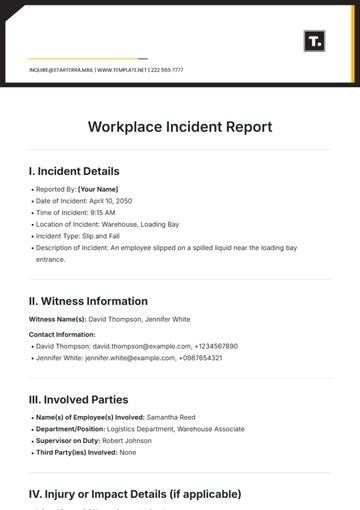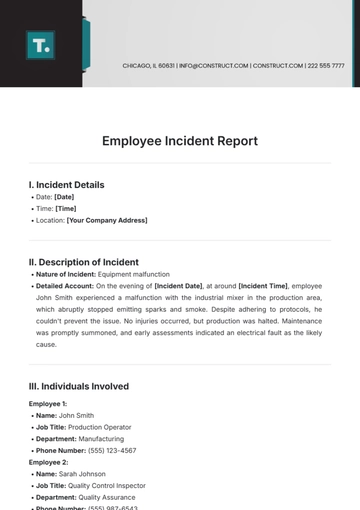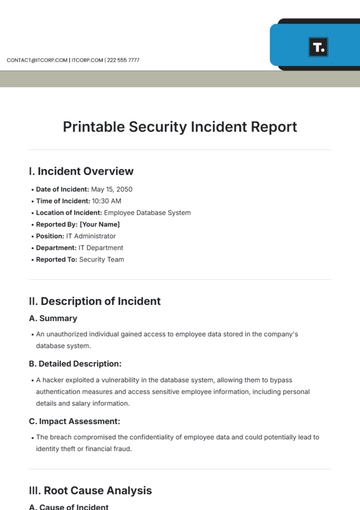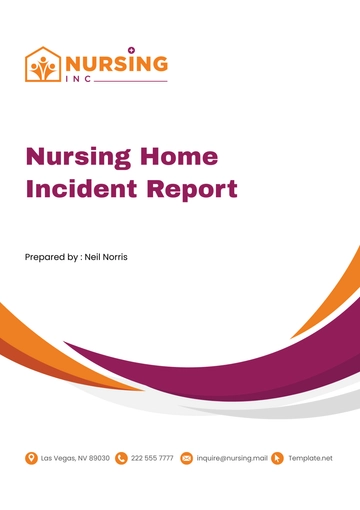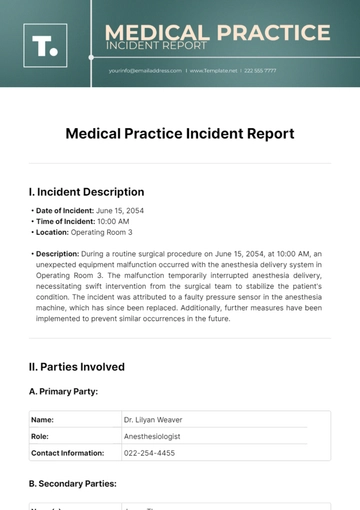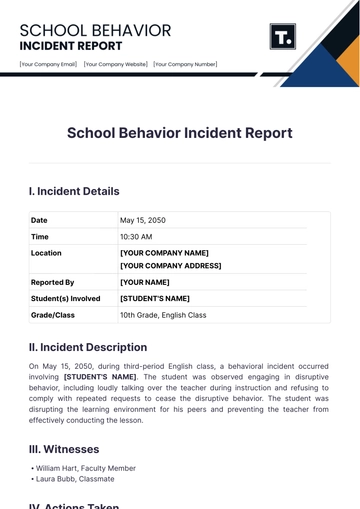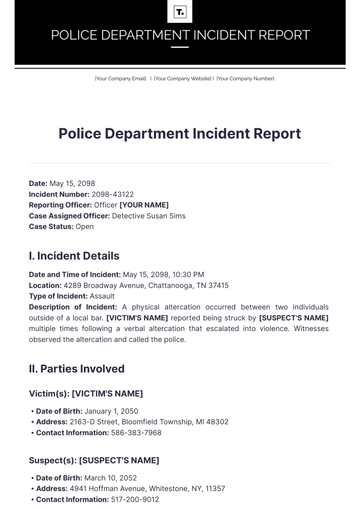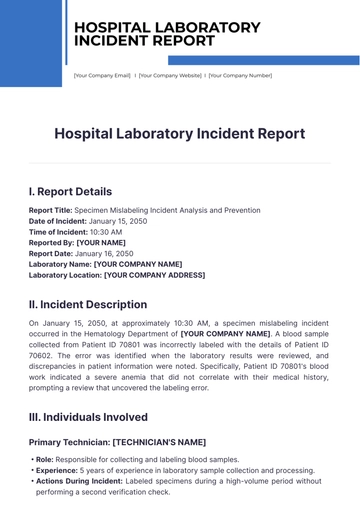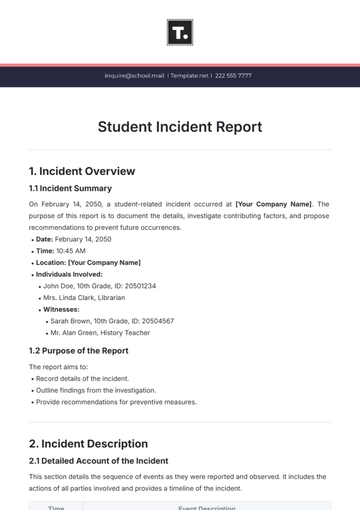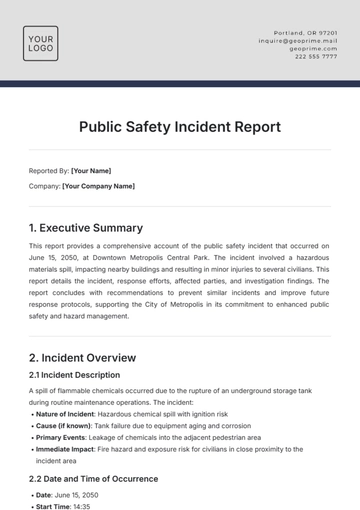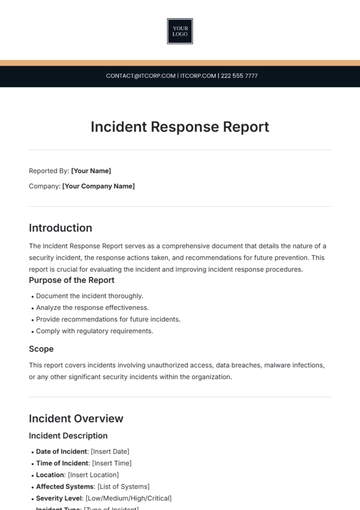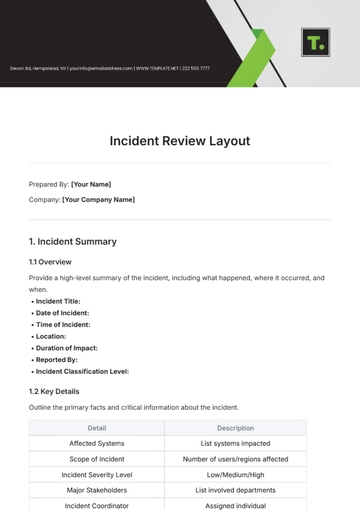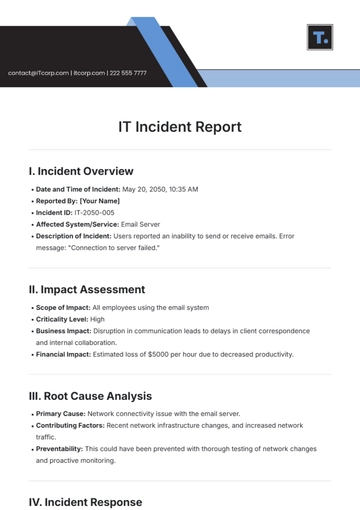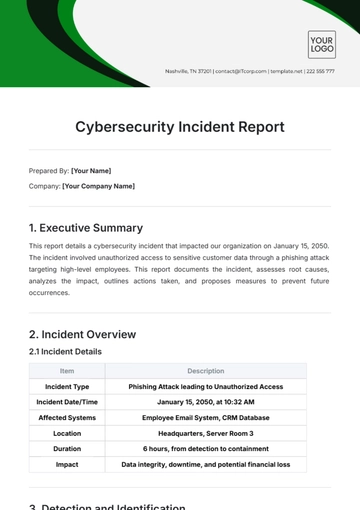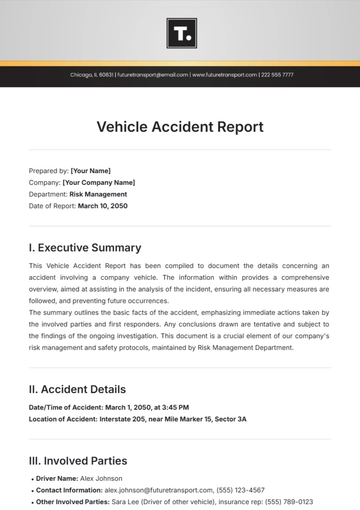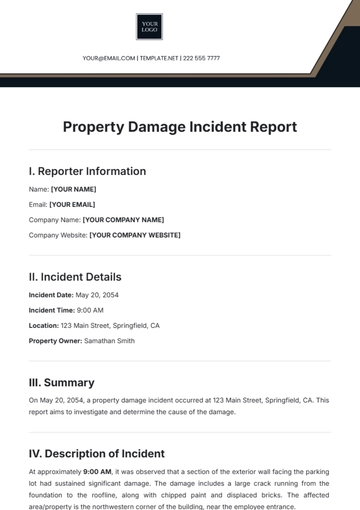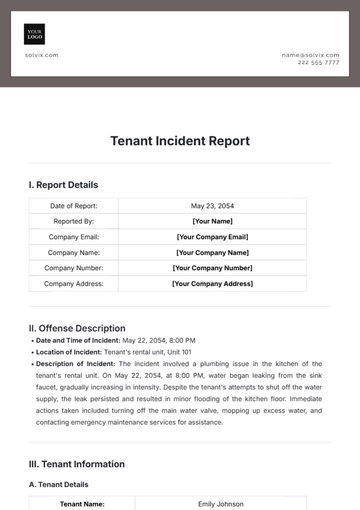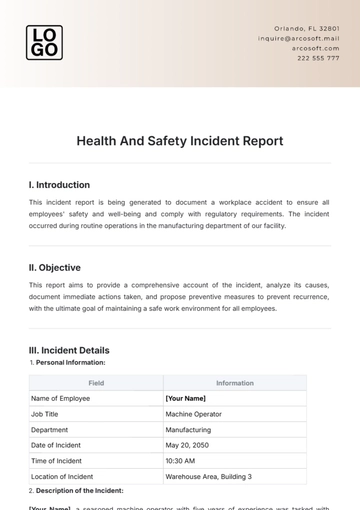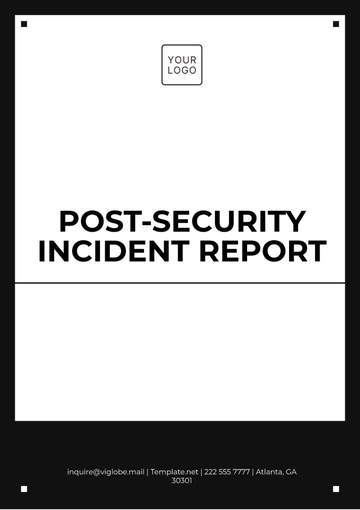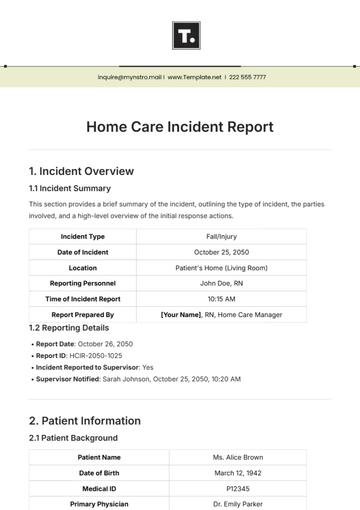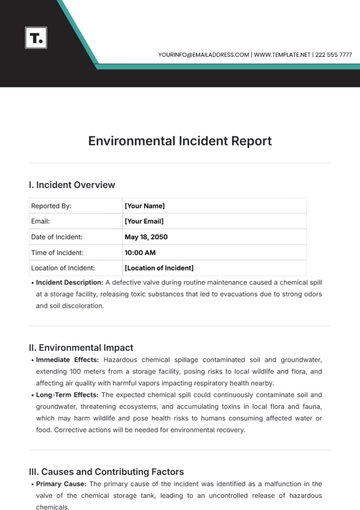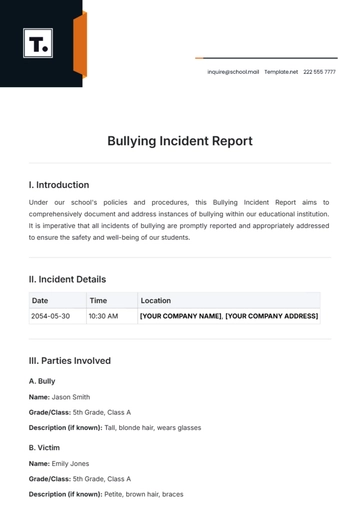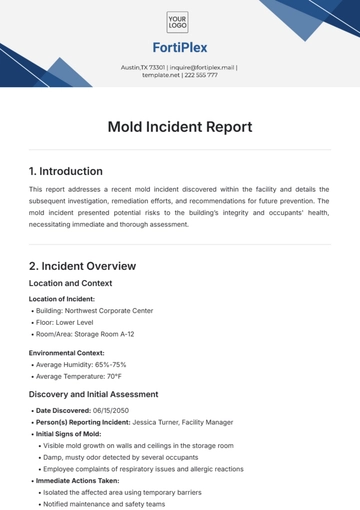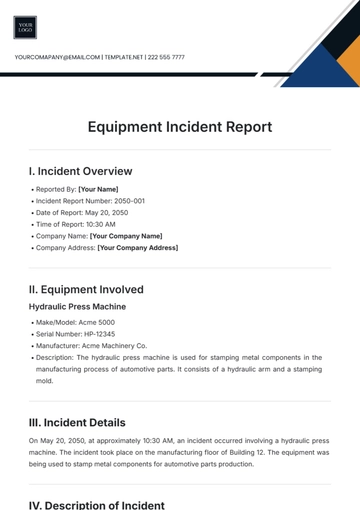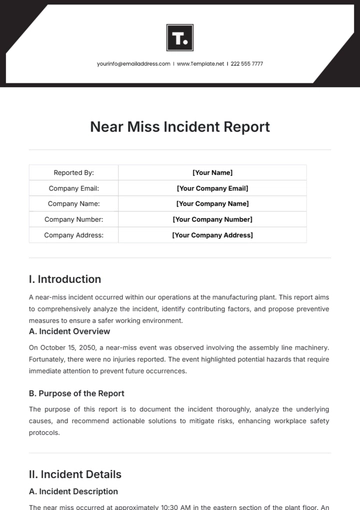Free Threat Intelligence Report

Company: | [YOUR COMPANY NAME] | ||
Prepared by: | [YOUR NAME] | Department: | [YOUR DEPARTMENT] |
I. Introduction
The [YOUR COMPANY NAME] Threat Intelligence Report aims to provide a comprehensive analysis of potential cybersecurity threats and vulnerabilities affecting the organization. This report serves as a valuable resource for [YOUR DEPARTMENT] to understand emerging threats, assess risks, and implement proactive measures to enhance cybersecurity posture. By examining threat intelligence data and trends, stakeholders can make informed decisions to safeguard critical assets and mitigate potential risks.
II. Threat Identification
The Threat Identification section focuses on identifying potential threats and vulnerabilities that pose risks to [YOUR COMPANY NAME]'s systems and data. Key areas of focus include:
Malware Threats:
Identification of known malware variants and their potential impact on organizational systems.
Analysis of malware distribution channels and infection vectors.
Phishing Attacks:
Identification of phishing campaigns targeting employees or customers.
Assessment of phishing techniques and tactics used by threat actors.
III. Methodology
The Methodology section outlines the approach and techniques used to gather and analyze threat intelligence data. It includes:
Data Collection:
Gathering threat intelligence from various sources, including internal security systems, threat feeds, and open-source intelligence (OSINT).
Analyzing threat indicators such as IP addresses, domain names, and file hashes.
Threat Intelligence Platforms (TIPs):
Utilizing threat intelligence platforms to aggregate, correlate, and analyze threat data.
Leveraging TIPs for automated threat detection and response.
IV. Findings
The Findings section presents the results of the threat intelligence analysis conducted during the reporting period. Key findings include:
Emerging Threat Trends:
Identification of emerging threats and attack vectors observed in the cybersecurity landscape.
Analysis of threat actor tactics, techniques, and procedures (TTPs).
Vulnerability Assessment:
Assessment of vulnerabilities discovered in organizational systems and applications.
Prioritization of vulnerabilities based on severity and potential impact.
V. Threat Analysis
The Threat Analysis section provides a detailed examination of specific threats identified in the findings. It includes:
Threat Profiles:
Profiles of known threat actors and cybercriminal groups targeting the organization.
Analysis of their motivations, capabilities, and tactics.
Attack Scenarios:
Examination of potential attack scenarios and their impact on organizational operations.
Assessment of the likelihood and severity of each scenario.
VI. Security Recommendations
Based on the findings and threat analysis, the Security Recommendations section provides actionable recommendations to mitigate identified threats and vulnerabilities. Recommendations include:
Patch Management:
Implementing a comprehensive patch management program to address known vulnerabilities.
Regularly updating software and firmware to minimize exposure to exploitation.
Security Awareness Training:
Providing ongoing security awareness training to employees to help them recognize and report phishing attempts and other security threats.
Conducting simulated phishing exercises to assess and improve employee readiness.
VII. Conclusion
In conclusion, the [YOUR COMPANY NAME] Threat Intelligence Report highlights the importance of proactive threat identification and mitigation in maintaining a robust cybersecurity posture. By leveraging threat intelligence insights and implementing security recommendations, [YOUR COMPANY NAME] can effectively mitigate risks and protect its assets against evolving cybersecurity threats. Continued vigilance and collaboration across departments are essential to maintaining resilience in the face of emerging threats.
- 100% Customizable, free editor
- Access 1 Million+ Templates, photo’s & graphics
- Download or share as a template
- Click and replace photos, graphics, text, backgrounds
- Resize, crop, AI write & more
- Access advanced editor
Introducing the Threat Intelligence Report Template from Template.net! Crafted for the discerning professional, this editable and customizable template is designed to streamline your threat analysis process. Editable in our AI Editor Tool, it empowers you to create comprehensive reports with ease and precision. Elevate your security strategy today!
You may also like
- Sales Report
- Daily Report
- Project Report
- Business Report
- Weekly Report
- Incident Report
- Annual Report
- Report Layout
- Report Design
- Progress Report
- Marketing Report
- Company Report
- Monthly Report
- Audit Report
- Status Report
- School Report
- Reports Hr
- Management Report
- Project Status Report
- Handover Report
- Health And Safety Report
- Restaurant Report
- Construction Report
- Research Report
- Evaluation Report
- Investigation Report
- Employee Report
- Advertising Report
- Weekly Status Report
- Project Management Report
- Finance Report
- Service Report
- Technical Report
- Meeting Report
- Quarterly Report
- Inspection Report
- Medical Report
- Test Report
- Summary Report
- Inventory Report
- Valuation Report
- Operations Report
- Payroll Report
- Training Report
- Job Report
- Case Report
- Performance Report
- Board Report
- Internal Audit Report
- Student Report
- Monthly Management Report
- Small Business Report
- Accident Report
- Call Center Report
- Activity Report
- IT and Software Report
- Internship Report
- Visit Report
- Product Report
- Book Report
- Property Report
- Recruitment Report
- University Report
- Event Report
- SEO Report
- Conference Report
- Narrative Report
- Nursing Home Report
- Preschool Report
- Call Report
- Customer Report
- Employee Incident Report
- Accomplishment Report
- Social Media Report
- Work From Home Report
- Security Report
- Damage Report
- Quality Report
- Internal Report
- Nurse Report
- Real Estate Report
- Hotel Report
- Equipment Report
- Credit Report
- Field Report
- Non Profit Report
- Maintenance Report
- News Report
- Survey Report
- Executive Report
- Law Firm Report
- Advertising Agency Report
- Interior Design Report
- Travel Agency Report
- Stock Report
- Salon Report
- Bug Report
- Workplace Report
- Action Report
- Investor Report
- Cleaning Services Report
- Consulting Report
- Freelancer Report
- Site Visit Report
- Trip Report
- Classroom Observation Report
- Vehicle Report
- Final Report
- Software Report
